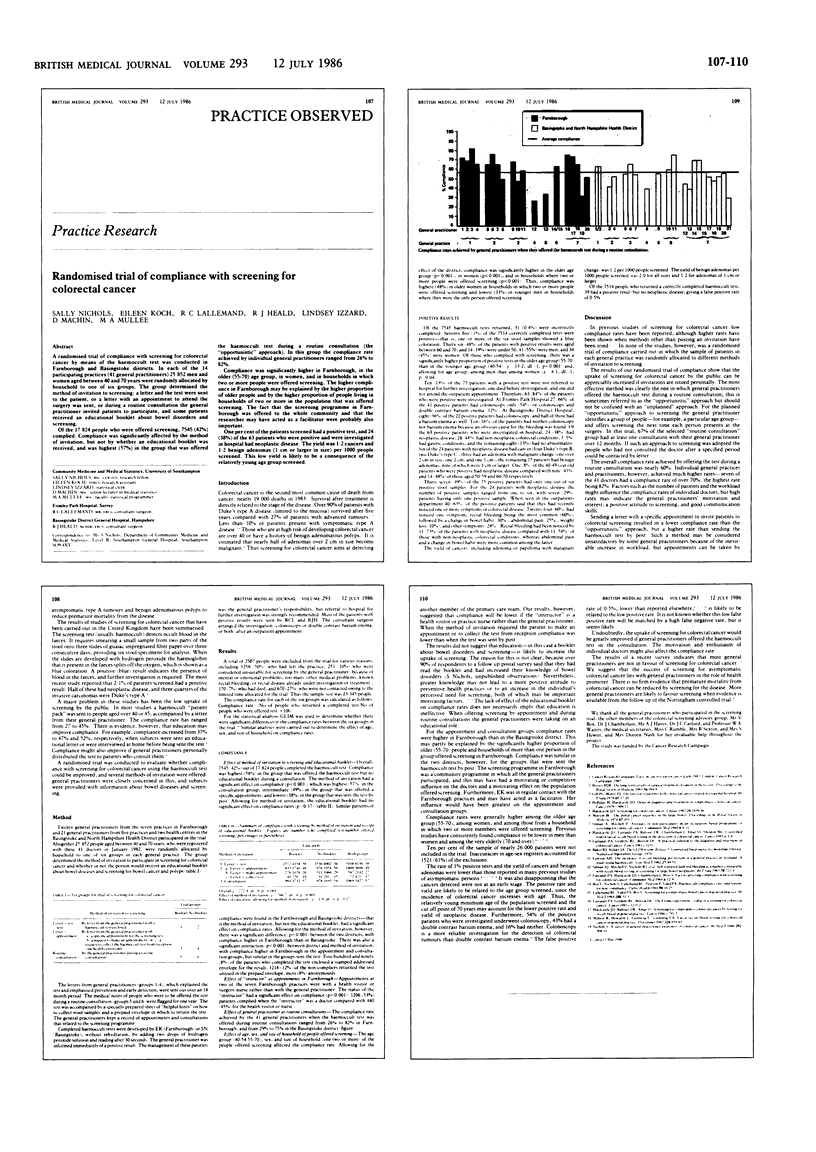Abstract
A randomised trial of compliance with screening for colorectal cancer by means of the haemoccult test was conducted in Farnborough and Basingstoke districts. In each of the 14 participating practices (41 general practitioners) 25 852 men and women aged between 40 and 70 years were randomly allocated by household to one of six groups. The group determined the method of invitation to screening: a letter and the test were sent to the patient, or a letter with an appointment to attend the surgery was sent, or during a routine consultation the general practitioner invited patients to participate, and some patients received an educational booklet about bowel disorders and screening. Of the 17 824 people who were offered screening, 7545 (42%) complied. Compliance was significantly affected by the method of invitation, but not by whether an educational booklet was received, and was highest (57%) in the group that was offered the haemoccult test during a routine consultation (the "opportunistic" approach). In this group the compliance rate achieved by individual general practitioners ranged from 26% to 82%. Compliance was significantly higher in Farnborough, in the older (55-70) age group, in women, and in households in which two or more people were offered screening. The higher compliance in Farnborough may be explained by the higher proportion of older people and by the higher proportion of people living in households of two or more in the population that was offered screening. The fact that the screening programme in Farnborough was offered to the whole community and that the researcher may have acted as a facilitator were probably also important. One per cent of the patients screened had a positive test, and 24 (38%) of the 63 patients who were positive and were investigated in hospital had neoplastic disease. The yield was 1.2 cancers and 1.2 benign adenomas (1 cm or larger in size) per 1000 people screened. This low yield is likely to be a consequence of the relatively young age group screened.
Full text
PDFPage 107-110




